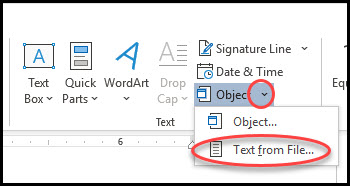
For example, if you are referencing item “a” which is nested under step “1” this option will return “1.a”.
Paragraph number (full context)-returns the paragraph number with full context. This option is helpful when reference nested numbered items, such as sub-steps in a procedure or nested outline items. 
Meaning Word adds context if the referenced item can be confused with another numbered item.
Paragraph number-returns the paragraph number with relative context. Page number-returns the page number on which the selected item appears. Text-returns the text of the selected items. The following describes the mostly commonly used options: The options displayed depend upon what you’ve selected in the Reference type field. The element that you want to return from the referenced item. Lastly, I’ll discuss a really helpful add-on that makes Word’s cross-reference feature much more user friendly. 
I’ll also discuss how to avoid a common error that can happen when using cross-references and how to troubleshoot errors when they do occur. In this post, I’ll cover how to insert and refresh cross-references. Fortunately, Word provides a tool for inserting dynamic references, meaning the references will update to reflect the current text of the referenced information with a simple key combination that refreshes all the dynamic items in your document. If you type “See page 30,” and the topic rolls onto page 31, your cross-reference will no longer be correct. When writing a complex document, such as a user’s guide or proposal, you may find occasions in which you want to direct the reader to another section of the document. Today’s post discusses how to create and maintain dynamic cross-references. In case you missed it, my last post covered custom properties which support content reuse and are a wonderful accoutrement to templates. Your gallery name will appear at the bottom of the Footer drop-down list.Welcome to Part 6 of the Harnessing the Power of Microsoft Word series.
Choose Save Selection to Footer Gallery (at the bottom) A dialogue box will open. If you want to add this footer to the Gallery. Right mouse click the field and choose Update Field Press F9 (Keyboard shortcut). Select the link in the footer and a popup balloon appears (see image below). If your document is saved, you should have the path and file name inserted. If you want to add the path, click the Add Path to File Name check box (on the right side). Under Categories select Document Information. The Field dialogue box will open (see image below)įollowing are two examples using the Field dialogue box Choose the Quick Parts command and select a Field.  From the Header and Footer tools - Design tab, in the Insert group. The following example shows you how to insert a document name (and path) into a Footer.
From the Header and Footer tools - Design tab, in the Insert group. The following example shows you how to insert a document name (and path) into a Footer. 
You can insert a "field" into a Header or Footer to automate your document.








 0 kommentar(er)
0 kommentar(er)
